Education
Record number of students hosted by English Education Ireland in 2024
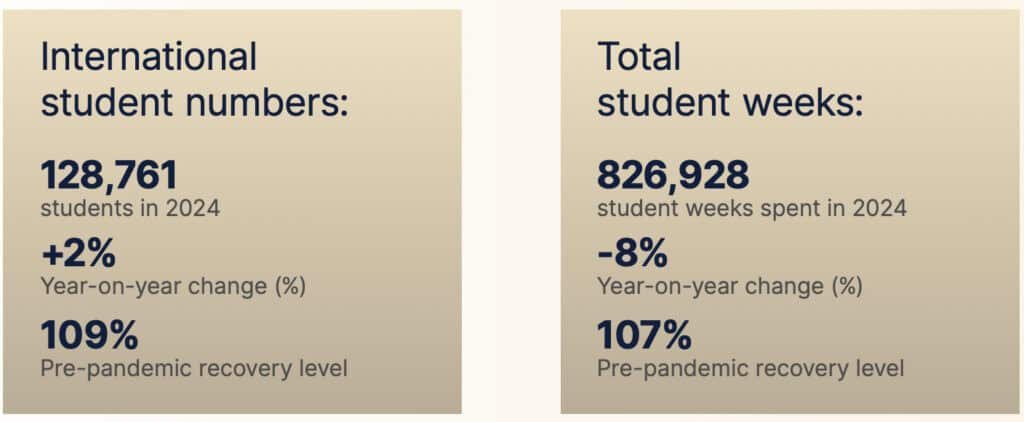
The sector demonstrated remarkable resilience in 2024, welcoming 128,761 international students from over 125 countries.
The findings come from English Education Ireland (EEI) through its annual report which is conducted with market intelligence firm, BONARD, using data collected through a sample-based survey of EEI member schools.
Lorcan O’Connor Lloyd, CEO of EEI, commented: “This report demonstrates the ongoing strength and value of the English Language Education sector in Ireland. The €792 million figure reflects only the direct economic impact – tuition, accommodation, and immediate spend – but the true value is far greater.
“International students boost local economies, support tourism and public transport, and enrich Ireland’s social and cultural life,” he added.
While total student numbers grow slightly (+2% year-on-year), the number of total student weeks declined by 8%, reflecting a broader global trend towards shorter stays. This was largely driven by the increasing popularity of “mini-stays” – short-term group programs for juniors, which surged by 12% in student numbers and 10% in student weeks.
Despite increasing competition from emerging destinations including Dubai and the Philippines, Ireland’s ELE sector has recovered to 109% of its pre-pandemic student numbers.
Adult learners, who represented 45% of students but accounted for 84% of student weeks, remain the financial backbone of the sector. In comparison, juniors made up 55% of all students, reflecting Ireland’s appeal as a short-term destination for younger learners.
Among all programs for adult international students, General English remains to be the most popular course type, with 90% of reported students enrolling in this program and an average duration of 12.7 weeks.
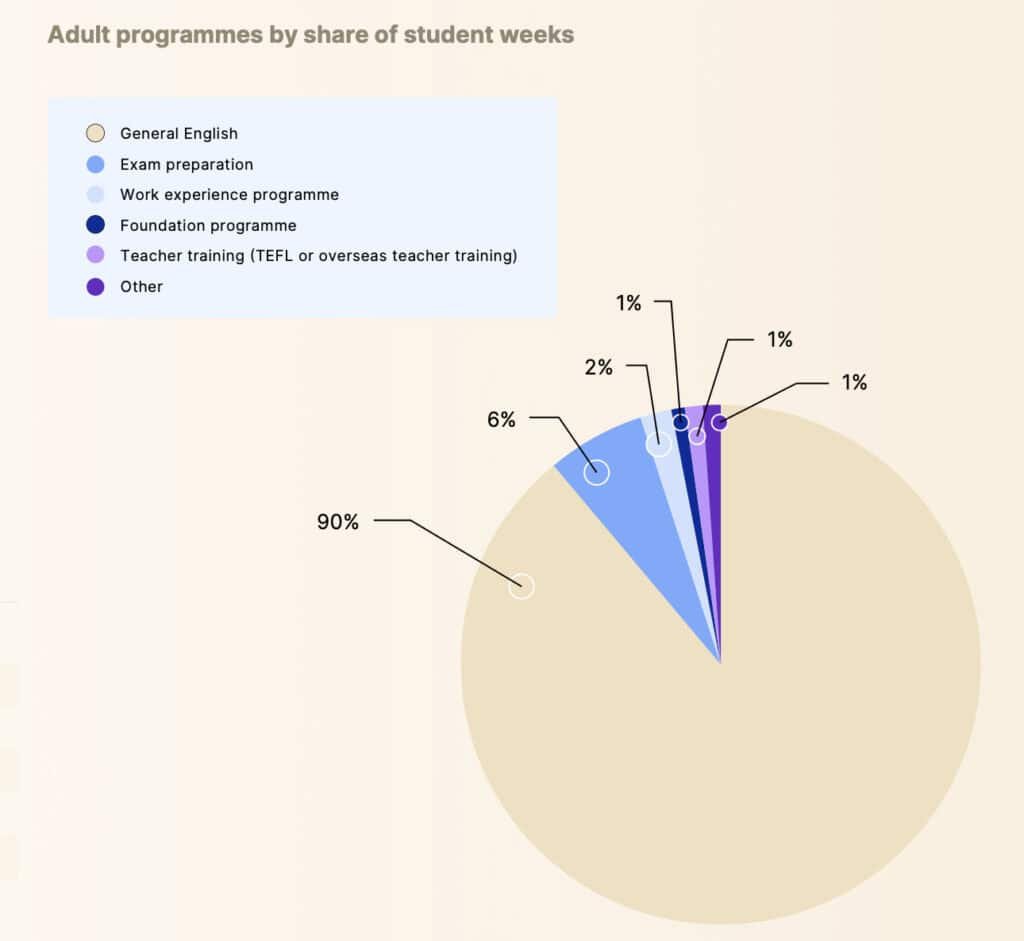
“This year’s data tells a story of cautious stability,” said Lloyd. “The increase in mini-stays signals strong demand for groupbased, immersive experiences, while adult learners continue to choose Ireland for longer-term study, driven by quality education, cultural appeal, and the warmth of our welcome.”
He added: “The data suggests that future growth may increasingly come from juniors and more compact programs.”
LATAM countries continue to dominate the adult segment, with Brazil and Mexico leading the way. Brazil, a top source market in Ireland since 2014, alone accounted for over 251,000 student weeks despite a slight drop in student numbers primarily in the junior segment.
Meanwhile, China showed positive momentum across both junior and adult segments in 2024, with a +74% increase in student numbers and +64% growth in student weeks.
Junior students came mainly from Europe, with Italy and Spain accounting for 80% of the student numbers, followed by Germany (2%) and France (3%). Mini-stays proved especially popular among Austrian, Mexican, and Chinese juniors, while adult learners from Mongolia (22.0 weeks) and Panama (21.9 weeks) had the longest average course duration.
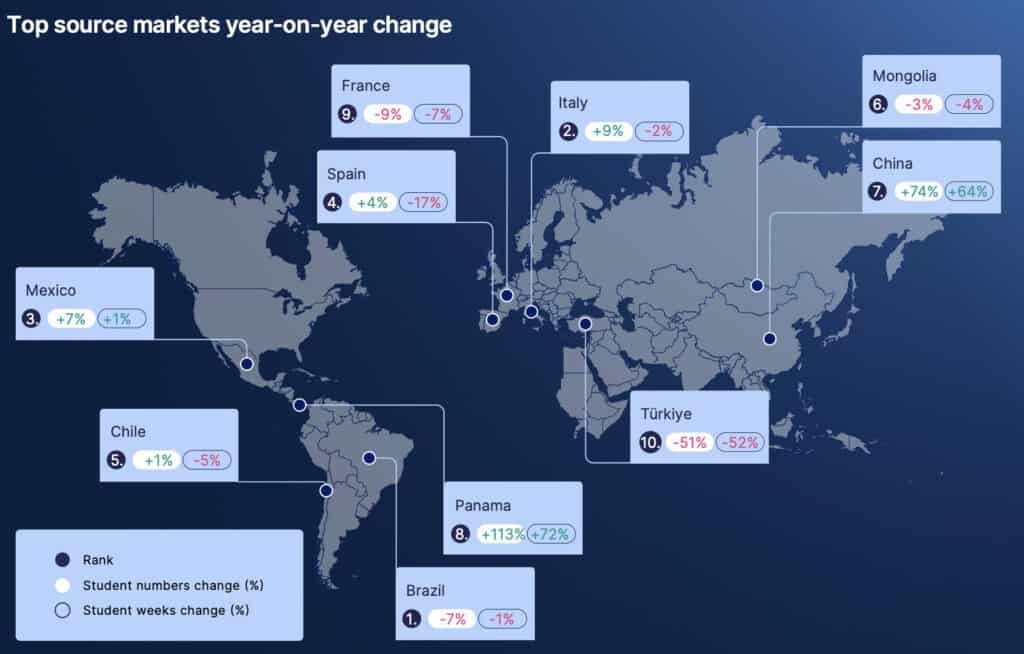
On average, each international student spent over €5,500 per stay, with 39% of that going toward accommodation and another 39% toward living expenses. Tuition accounted for 22% of the spend and continues to be the primary revenue stream for schools, contributing 52% of total annual income.

In terms of employment, in 2024, EEI member schools reported employing nearly 3,000 staff during the peak season (June–August). Notably, Dublin has the highest concentration of EEI member schools, with over 60% of premises based in the capital.
“The sector contributed almost €800 million to the Irish economy in 2024, which is remarkable given that most providers are small or medium-sized businesses,” said Lloyd.
“The economic impact stretches far beyond tuition fees, encompassing accommodation, transport, tourism, and even labour support in sectors like hospitality and homecare.
There is real work to do in raising awareness of the role international students play in Ireland’s economy and society
Lorcan O’Connor Lloyd, EEI
“Yet despite this, the sector remains underappreciated in public and political conversations. There is real work to do in raising awareness of the role international students play in Ireland’s economy and society.”
The report also mentions mounting pressures, such as student visa processing delays, tightening immigration regulations, and a highly competitive global market. EEI member schools emphasised the need for continued government support, clearer visa regulations, and sustained marketing efforts to maintain Ireland’s competitiveness.
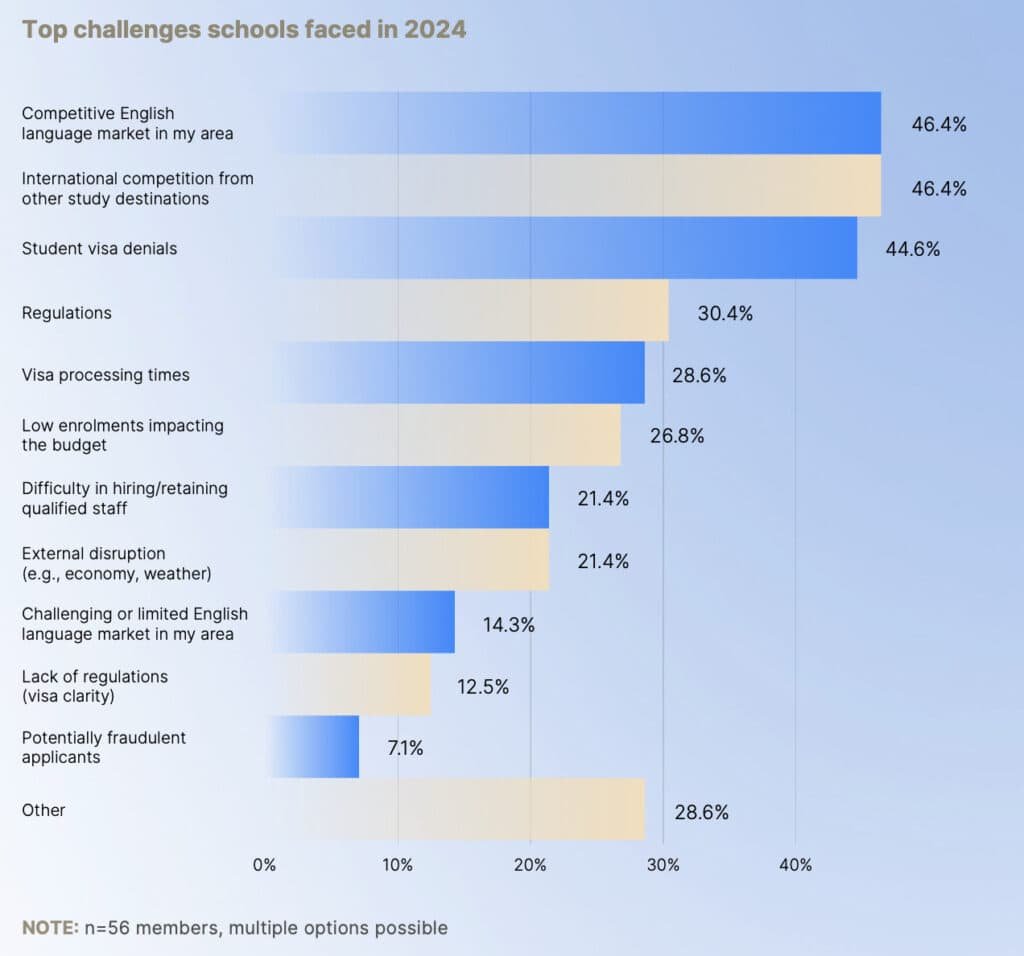
Lloyd pointed out that despite Ireland remaining a very attractive place to study, the position is not guaranteed.
“In 2024, schools experienced more visa refusals, delays in processing, and uncertainty around policy changes,” he said.
“These challenges are already starting to affect student recruitment, particularly from non-EU countries. The recent decision to double the financial proof requirement for non-visa students is a clear example of how policy shifts can have unintended consequences, especially for key growth regions like Latin America and Asia.
“To remain competitive, Ireland needs greater policy alignment across immigration, education, and economic planning, as well as regular and meaningful engagement with the sector.”
Education
Florida Virtual School rolls out AI course to strengthen student math skills

Florida Virtual School is using artificial intelligence to strengthen its students’ math skills.
More than 80 students from sixth to eleventh grade were the first to participate in the online school’s “AI in Math” enrichment program.
The online school says students were able to learn AI concepts and boost AI literacy by using algebra-based activities.
The 10-hour course was developed by the University of Florida and the education research group Concord Consortium. FLVS students currently taking Algebra 1 Segment 1 can sign up for the program and earn a certificate from UF.
READ MORE: AI in schools: Miami-Dade set to develop ethical guidelines for students, teachers
This is a News In Brief report. Visit WLRN News for in-depth reporting from South Florida and Florida news.
Copyright 2025 WLRN Public Media
Education
How AI Is Turning Hugh School Students Into Entrepreneurs
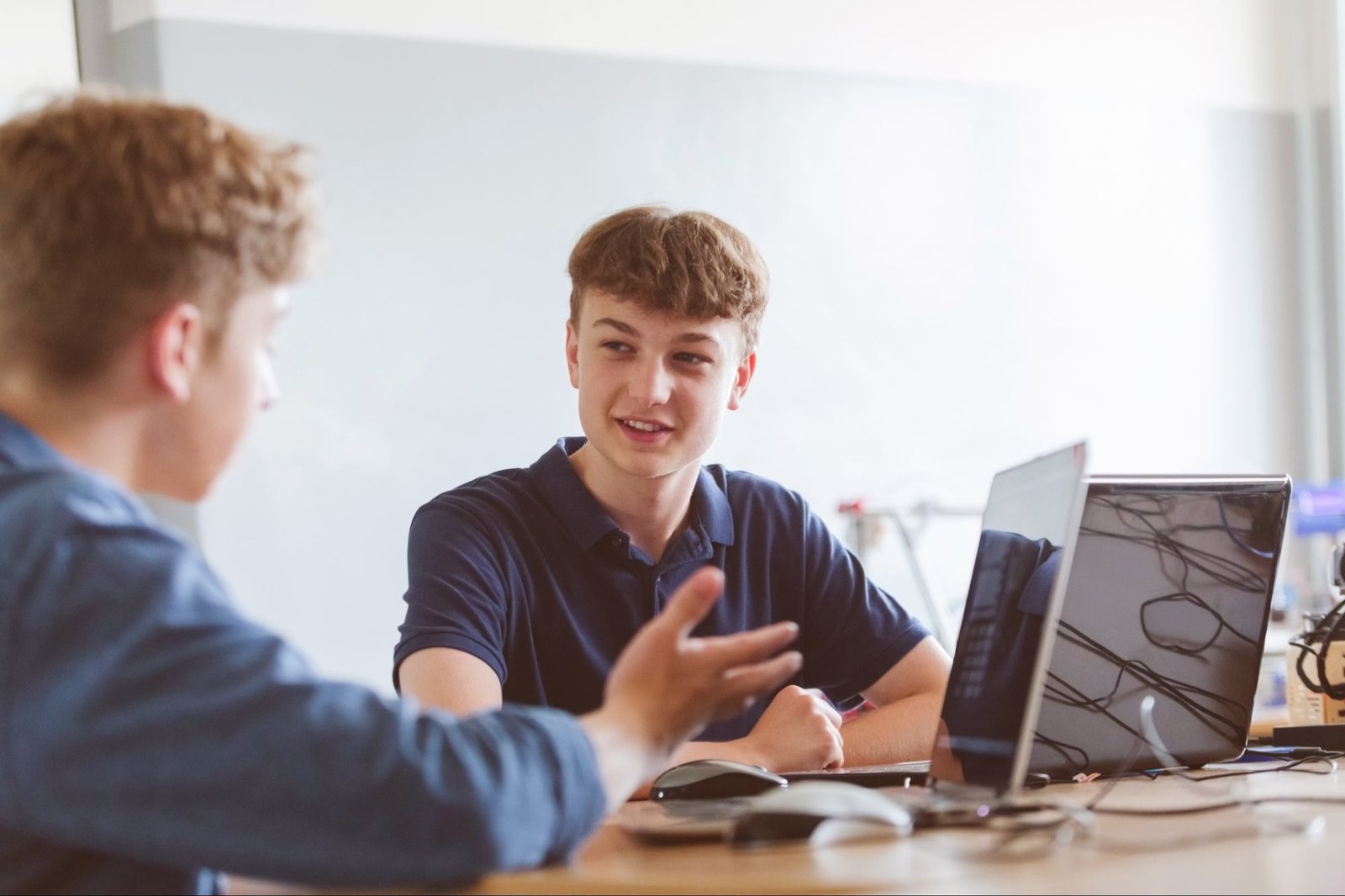
Opinions expressed by Entrepreneur contributors are their own.
This is the third installment in the “1,000 Days of AI” series. I’ve had a front-row seat to K-12 education’s transformation — working with school systems worldwide as an AI education consultant to develop school district AI strategies and watching something remarkable unfold. The change didn’t come from curriculum committees or federal mandates, but from students who, as always, refused to wait for permission.
While educators debated whether ChatGPT constituted cheating, 17-year-old high schooler Zach Yadegari built an AI app generating $1.12 million in monthly revenue. He began coding at age seven, initially creating a gaming website to bypass his elementary school’s firewalls. By 16, he’d already sold his first company for $100,000.
Related: How AI Is Transforming Education Forever — and What It Means for the Next Generation of Thinkers
The stark reality: AI has already changed everything
Within 1,000 days, ChatGPT has fundamentally challenged traditional K-12 education. According to ACT research, 70% of high school students used AI tools in 2023-24, up from 58% the previous year. Pew Research confirms ChatGPT usage for schoolwork doubled from 2023 to 2024. But these statistics miss the real story: Students aren’t just using AI to complete assignments — they’re using it to build businesses, forcing schools to rapidly develop AI policies that balance innovation with responsible AI use in education.
The traditional model assumed knowledge was scarce and teachers were gatekeepers. AI shattered both assumptions overnight. Every student now has access to infinite tutoring, instant expertise and tools that turn ideas into products in hours, not years. The question isn’t whether students should learn entrepreneurship — they already are.
From high school hallways to revenue streams
The most successful young entrepreneurs started as intrapreneurs within the school system itself. High school students across the country are transforming their AI skills into real businesses. Students nationwide are selling AI-generated study guides to classmates for $50-$500 monthly.
The irony isn’t lost on me: What adults call cheating, these students call market research. What teachers label shortcuts, investors recognize as minimum viable products. In my work helping districts with developing AI policy for schools, I’ve seen how these entrepreneurial students actually exemplify AI education best practices — they’re solving real problems with real tools.
The intrapreneurs inside our schools
Not all innovation happens outside school walls. Student intrapreneurs are creating AI tutoring programs for struggling peers, building attendance apps for their schools and developing mental health chatbots for counselors. They see school problems as product opportunities, transforming education while living it.
Teachers are becoming intrapreneurs, too. Forward-thinking educators use AI to create personalized learning paths, automate grading to spend more time with students and build tools that spread district-wide. These educator-intrapreneurs bridge institutional requirements and student innovation, creating space for experimentation within existing structures while contributing to AI curriculum development for K-12.
Related: Why We Shouldn’t Fear AI in Education (and How to Use It Effectively)
The federal framework meets grassroots reality
In April 2025, President Trump signed “Advancing Artificial Intelligence Education for American Youth,” establishing the White House Task Force on AI Education. The executive order creates the Presidential AI Challenge to “encourage and highlight student and educator achievements in AI” across multiple age categories. This isn’t just another science fair — it’s federal recognition that K-12 students are already AI practitioners, validating the school district AI strategies that forward-thinking administrators have been developing.
Crucially, the Presidential AI Challenge calls for students to “use AI to address community challenges,” validating what student entrepreneurs have been doing all along. The framework emphasizes that AI education must “spark curiosity and creativity,” but students aren’t preparing to participate — they’re already leading. This federal backing provides the cover innovative schools need to transform detention into incubation and homework into hackathons, establishing new AI education best practices along the way.
3 practical steps for schools right now
1. Implement “innovation hours” aligned with the Presidential AI Challenge:
Dedicate weekly time for students to work on AI projects addressing real community problems. Let students form ventures, not just groups. Let them pursue customers, not just grades. Schools implementing this now will have students ready when the Presidential AI Challenge launches. This approach to AI curriculum development for K-12 turns theory into practice.
2. Transform detention into incubation:
Every student “caught” using AI creatively should be redirected, not punished. Create an “AI Innovation Council” where rule-benders become rule-makers. Have them develop your school’s AI policy and teach AI literacy to younger students. The White House Task Force calls for student-educator collaboration — make your “problem students” your problem solvers. This is responsible AI use in education at its best.
3. Create intrapreneurship pathways:
Establish formal recognition for students improving school operations through AI. Give course credit for building tools the school actually uses. Partner with local businesses for real-world projects. Every pizza shop and dental office needs AI help. Your students can provide it while earning money and credits. These pathways should be central to any school district AI strategy.
The next 1,000 days: Bigger challenges, bigger opportunities
The first 1,000 days proved that students could use AI. The next 1,000 days will prove they can lead with it. As AI becomes more powerful, the gap between students with access and support versus those without will widen exponentially. A student with ChatGPT, supportive teachers and entrepreneurial parents will build companies. A student with restricted access and punitive policies will fall behind — not by years, but by generations.
The mental health implications are staggering. When 14-year-olds can build million-dollar businesses, what happens to those who can’t? When AI can do homework in seconds, how do we measure learning? These aren’t distant philosophical questions; they’re immediate challenges requiring thoughtful approaches to developing AI policy for schools.
The next 1,000 days will see AI-native students enter the workforce. I can’t wait to see how they reshape entire industries. The concept of “entry-level” will dissolve when teenagers arrive with more AI experience than senior executives.
The entrepreneurial imperative
Schools that thrive won’t be those with the best AI policies or detection tools. They’ll be those cultivating intrapreneurs — students and teachers who transform systems from within. Every student who builds a tool to help classmates is an intrapreneur. Every teacher experimenting with AI to improve outcomes is an intrapreneur. Every administrator creating space for innovation enables intrapreneurship.
After 1,000 days of ChatGPT in K-12 education, one truth emerges: Students who embraced AI as a tool for creation rather than completion are building the future economy. They’re intrapreneurs transforming schools from within and entrepreneurs building alternatives from without.
The next 1,000 days will be exponentially more complex. AI will become more powerful, accessible and essential. Students who start building now will have compounded advantages. For educators, parents and policymakers seeking guidance from an AI keynote speaker for education or looking to establish AI education best practices, the path forward is clear: Embrace intrapreneurship, enable entrepreneurship, and expect transformation. The federal government has provided the framework through the Presidential AI Challenge. Now it’s time for local action.
The kids aren’t just alright — they’re already ahead. The question for the next 1,000 days isn’t whether students will use AI to transform education and the economy. They will. The question is whether we’ll help them build something better or watch them build around us.
Coming next in the “1,000 Days of AI” series: Legal’s AI transformation — where precedent meets algorithms, and why your next lawyer might be an AI that passed the bar exam on its first try.
Education
AI is a ‘Breaking Point’ in K-12 and Higher Ed
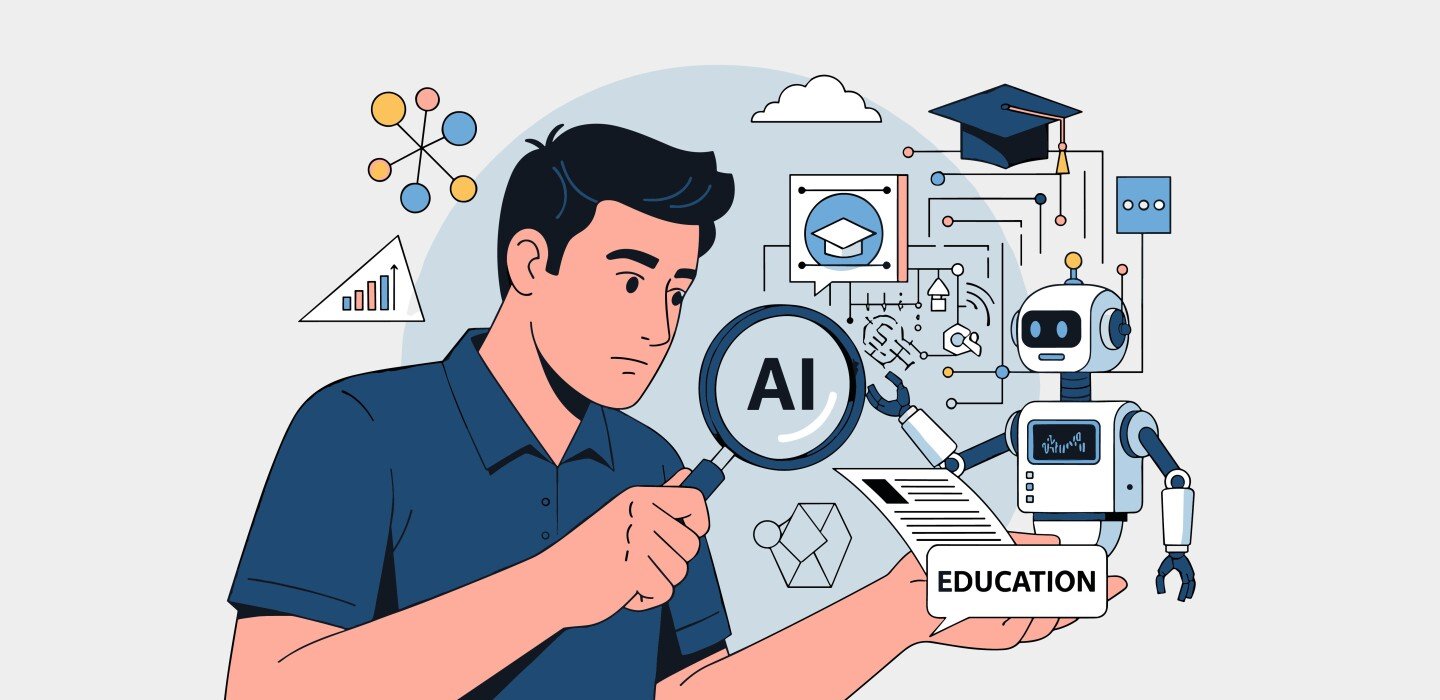
(TNS) — Another school year is beginning — which means another year of AI-written essays, AI-completed problem sets, and, for teachers, AI-generated curricula. For the first time, seniors in high school have had their entire high-school careers defined to some extent by chatbots. The same applies for seniors in college: ChatGPT released in November 2022, meaning unlike last year’s graduating class, this year’s crop has had generative AI at its fingertips the whole time.
My colleagues Ian Bogost and Lila Shroff both recently wrote articles about these students and the state of AI in education. (Ian, a university professor himself, wrote about college, while Lila wrote about high school.) Their articles were striking: It is clear that AI has been widely adopted, by students and faculty alike, yet the technology has also turned school into a kind of free-for-all.
I asked Lila and Ian to have a brief conversation about their work — and about where AI in education goes from here.
This interview has been edited and condensed.
Lila Shroff: We’re a few years into AI in schools. Is the conversation maturing or changing in some way at universities?
Ian Bogost: Professors are less surprised that it exists, but there is maybe a bit of a blind spot to the state of adoption among students. I saw a panic in 2022, 2023 — like, Oh my God, this can do anything. Or at least there were questions. Can this do everything? How much is my class at risk? Now I think there’s more of a sense of, Well, this thing still exists, but we have time. We don’t have to worry about it right away. And that might actually be a worse reaction than the original.
Lila: The blind-spot language rings true to the high-school environment too. I spoke to some high schoolers — granted this was quite a small sample — but basically it sounds like everybody is using this all the time for everything.
Ian: Not just for school, right? Anything they want to do, they’re asking ChatGPT now.
Lila: I was a sophomore in college when ChatGPT came out, so I witnessed some of this firsthand. There was much more anxiety — it felt like the rules were unclear. And I think both of our stories touched on the fact that for this incoming class of high-school and college seniors, they’ve barely had any of those four years without ChatGPT. Whatever sort of stigma or confusion that might have been there in earlier years is fading, and it’s becoming very much default and normalized.
Ian: Normalization is the thing that struck me the most. That is not a concept that I think the teachers have wrapped their heads around. Teachers and faculty also have been adopting AI carefully or casually — or maybe even in a more professional way, to write articles or letters of recommendation, which I’ve written about. There’s still this sense that it’s not really a part of their habit.
Lila: I looked into teachers at the K-12 level for the article I wrote. Three in 10 teachers are using AI weekly in some way.
Ian: Some kind of redesign of educational practice might be required, which is easy for me to say in an article. Instead of an answer, I have an approach to thinking about the answer that has been bouncing around in my brain. Are you familiar with the concept in software development called technical debt? In the software world, you make the decision about how to design or implement a system that feels good and right at the time. And maybe you know it’s going to be a bad idea in the long run, but for now, it makes sense and it is convenient. But you never get around to really making it better later on, and so you have all these nonoptimal aspects of your infrastructure.
That’s the state I feel like we’re in, at least in the university. It’s a little different in high school, especially in public high school, with these different regulatory regimes at work. But we accrued all this pedagogical debt, and not just since AI — there are aspects of teaching that we ought to be paying more attention to or doing better, like, this class needs to be smaller, or these kinds of assignments don’t work unless you have a lot of hands-on iterative feedback. We’ve been able to survive under the weight of pedagogical debt, and now something snapped. AI entered the scene and all of those bad or questionable — but understandable — decisions about how to design learning experiences are coming home to roost.
Lila: I agree that AI is a breaking point in education. One answer that seems to be emerging at the high-school level is a more practical, skills-based education. The College Board, for instance, has announced two new AP courses — AP Business and AP Cybersecurity. But there’s another group of people who are really concerned about how overreliance on these tools erodes critical-thinking skills, and maybe that means everyone should go read the classics and write their essays in cursive handwriting.
Ian: My young daughter has been going to this set of classes outside of school where she learned how to wire an outlet. We used to have shop class and metal class, and you could learn a trade, or at least begin to, in high school. A lot of that stuff has been disinvested. We used to touch more things. Now we move symbols around, and that’s kind of it.
I wonder if this all-or-nothing nature of AI use has something to do with that. If you had a place in your day as a high-school or college student where you just got to paint, or got to do on-the-ground work in the community, or apply the work you did in statistics class to solve a real-world problem — maybe that urge to just finish everything as rapidly as possible so you can get onto the next thing in your life would be less acute. The AI problem is a symptom of a bigger cultural illness, in a way.
Lila: Students are using AI exactly as it has been designed, right? They’re just making themselves more productive. If they were doing the same thing in an office, they might be getting a bonus.
Ian: Some of the students I talked to said, ‘Your boss isn’t going to care how you get things done, just that they get done as effectively as possible.’ And they’re not wrong about that.
Lila: One student I talked to said she felt there was really too much to be done, and it was hard to stay on top of it all. Her message was, maybe slow down the pace of the work and give students more time to do things more richly.
Ian: The college students I talk to, if you slow it all down, they’re more likely to start a new club or practice lacrosse one more day a week. But I do love the idea of a slow-school movement to sort of counteract AI. That doesn’t necessarily mean excluding AI — it just means not filling every moment of every day with quite so much demand.
But you know, this doesn’t feel like the time for a victory of deliberateness and meaning in America. Instead, it just feels like you’re always going to be fighting against the drive to perform even more.
©2025 The Atlantic Monthly Group. Distributed by Tribune Content Agency, LLC.
-

 Business5 days ago
Business5 days agoThe Guardian view on Trump and the Fed: independence is no substitute for accountability | Editorial
-
Tools & Platforms3 weeks ago
Building Trust in Military AI Starts with Opening the Black Box – War on the Rocks
-

 Ethics & Policy1 month ago
Ethics & Policy1 month agoSDAIA Supports Saudi Arabia’s Leadership in Shaping Global AI Ethics, Policy, and Research – وكالة الأنباء السعودية
-

 Events & Conferences4 months ago
Events & Conferences4 months agoJourney to 1000 models: Scaling Instagram’s recommendation system
-

 Jobs & Careers2 months ago
Jobs & Careers2 months agoMumbai-based Perplexity Alternative Has 60k+ Users Without Funding
-

 Education2 months ago
Education2 months agoVEX Robotics launches AI-powered classroom robotics system
-

 Funding & Business2 months ago
Funding & Business2 months agoKayak and Expedia race to build AI travel agents that turn social posts into itineraries
-

 Podcasts & Talks2 months ago
Podcasts & Talks2 months agoHappy 4th of July! 🎆 Made with Veo 3 in Gemini
-

 Podcasts & Talks2 months ago
Podcasts & Talks2 months agoOpenAI 🤝 @teamganassi
-

 Education2 months ago
Education2 months agoAERDF highlights the latest PreK-12 discoveries and inventions











